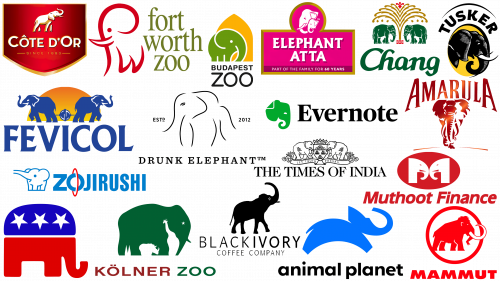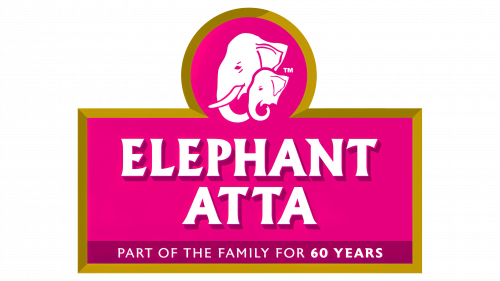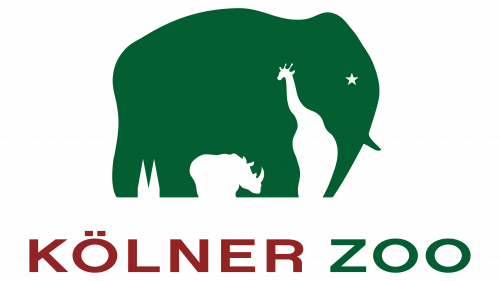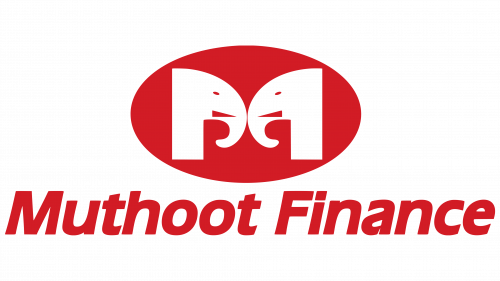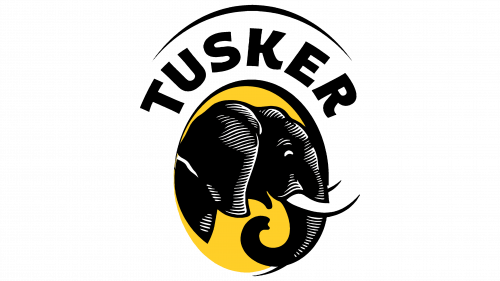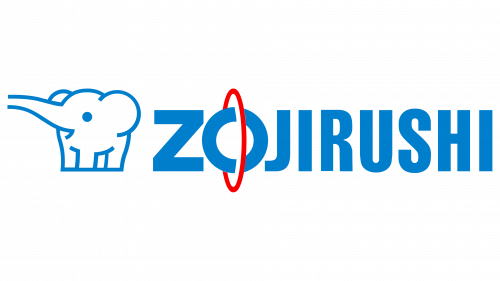Elephant logos are a powerful symbol for organizations, embodying many admirable qualities such as strength, intelligence, and wisdom. By incorporating the elephant into their branding, companies use the recognized qualities of this majestic creature to evoke certain emotions and associations in their target audience.
Although elephant logos are less common than logos with other animals, they are finding their way into many industries around the world. Whether it’s technology, education, or retail, companies that use an elephant logo pay homage to its revered characteristics and boldly describe their brand attributes. It’s not just an artistic choice but a thoughtful branding decision aimed at establishing a strong emotional connection between the company and its consumers.
Across cultures around the world, the elephant is revered for qualities such as loyalty and wisdom and is a universal icon that knows no geographical boundaries. By choosing the elephant as a logo, a company is placing itself alongside these powerful symbols, establishing itself as an organization that values intelligence, strength, and ethical behavior.
Brands with elephant logos: Famous elephant logo brands
Elephant imagery in logos often embodies many positive attributes that companies aim to capture. These large mammals symbolize wisdom, strength, and stability, among other virtues. Remarkably, not many corporations select the elephant as a logo figure, even though its iconography has positive connotations.
Those incorporating an elephant into their brand visuals often exude characteristics commonly associated with these animals, such as dependability and longevity.
Amarula
Originally from South Africa, Amarula cream liqueur is known for its combination of cream, fruit, and sugar, resulting in an alcohol content of 17%. The Southern Liquor Company pioneered the introduction of this unusual drink to the South African market.
The brand is distinguished by a prominent elephant logo, a design choice deeply connected to the natural history of the African continent. African bush elephants are known to favor the fruit of the Marula tree, a key fruit component in the Amarula liqueur formulation. Far from being superficial, the interaction between the elephant and the fruit of the Marula tree emphasizes the authenticity of the product’s origin.
The elephant emblem fulfills many functions beyond brand identification. It emphasizes the organic roots of the liqueur, pointing to the natural habitat of the Marula fruit. In this way, the liqueur conveys a message of authenticity to consumers who value the authenticity of their products. The elephant logo serves a dual function: it helps sell the product and draws attention to an important environmental issue.
Animal Planet
Animal Planet, created in 1996, is a well-known American television channel owned by Warner Bros. and Discovery Networks. The channel appeared on the television screen thanks to the cooperation with BBC Worldwide. From the very beginning, the focus of the channel was on documentaries about nature, wildlife, and ecology, which attracted the attention of viewers to these topics.
Animal Planet’s logo utilizes an incredibly streamlined elephant figure built from simple geometric shapes. This uncomplicated design serves several purposes at once. It reflects the channel’s thematic focus on the natural world, immediately giving viewers an idea of what kind of content they can expect. In addition, the logo’s simplistic look provides easy brand recognition, which is important in an industry with multiple channels vying for viewers’ attention.
Color plays a key role in the effectiveness of a logo. A particular shade of blue is chosen to emphasize reliability and integrity. This shade blends seamlessly with the educational focus of the channel’s programs, evoking a sense of trust and authority in viewers. It evokes a calm, reassuring aura that reinforces the reliability of the broadcast content.
Black Ivory Coffee
The Black Ivory Coffee Company logo features an elephant, which serves as a visual description of the brand’s unusual but interesting history. The process by which elephants eat Arabica coffee beans and then excrete them from their bodies results in a unique and expensive coffee blend. The use of beans derived from elephant waste may be perplexing to the uninitiated, but this particular coffee has carved out a niche for itself in the luxury world. Its impressive price – about 50 dollars per serving – allows it to take its place among the elite coffees of the world.
The multifaceted symbolism of the elephant in the logo cannot go unnoticed. Firstly, it brings to mind the special process of coffee production, acting as an unmistakable signature to the brand’s unique methodology. This iconic image creates an immediate and indelible connection between the consumer and the coffee’s unusual origin.
Secondly, the symbolic use of the elephant is a masterful move in brand storytelling, as elephants have long been a symbol of several positive qualities such as longevity, majesty, and intelligence. By incorporating such a symbol into its branding, Black Ivory Coffee Company enhances the perceived value of its product by enriching it with the implicit promise of an experience that goes beyond mere taste and embodies greatness and strength.
Budapest Zoo
Budapest Zoo, which dates back to 1866, is another outstanding zoological institution. It is home to 1,072 animal species and attracts many visitors every year. In the zoo’s logo, among the various visual identifiers, the elephant takes center stage, reflecting the essence of its exotic offerings.
The design of the logo differs from the traditional and is done in a modern minimalist aesthetic, which distinguishes it from other zoological emblems. Minimalism gives the logo a fun, friendly vibe that makes it memorable and appealing. The choice of modern style is in keeping with the zoo’s desire to be an accessible place for people of all ages.
The background of the logo is occupied by a single shape that emphasizes the distinctive architecture that Budapest is famous for. This artistic element serves several purposes at once: it not only points to the architectural wonders of the city but also complements the simplistic design of the elephant.
Chang Beer
Created as a product of Thai Bev, Chang Beer is a well-known name in the world of alcoholic beverages. The name of the brand “Chang” comes from the Thai term “elephant,” which emphasizes the enduring importance and authority of this animal in the culture and history of Thailand. It is no coincidence that this animal is prominently featured in the brand’s logo, which is a kind of visual embodiment of the beer.
The logo has an intricate design, showing two elephants facing each other and framing a golden fountain. Although the fountain does not signify anything specific, its golden hue suggests a connection to the beer the company produces. The color scheme of green and gold in the emblem is deliberately chosen: each color symbolizes a specific meaning. Green is an indication of nature, which corresponds to the company’s emphasis on natural ingredients, while gold symbolizes prosperity and high quality.
The choice of color and symbolism works on several levels. It draws on elements deeply rooted in Thai culture and integrates them into a modern commercial context. This fusion of tradition and modernity gives the brand an authentic and contemporary feel. It helps bridge the gap between traditional Thai values and the demands of the global competitive marketplace.
Côte d’Or
Côte d’Or, one of the key players in the Belgian chocolate industry, is a subsidiary of Mondelez International. The company was established in 1993, choosing a name reminiscent of the Gold Coast. This region (present-day Ghana) is famous for its rich reserves of cocoa beans, an essential element of chocolate production.
The company’s emblem features a golden-white elephant with an original design. This graphic element pays homage to the historical use of elephants on postage stamps and other Gold Coast regional identifiers. The specific logo design embodies the values of strength, compassion, and wisdom traditionally associated with elephants.
The choice of gold and white hues in the elephant image enriches the brand narrative. Gold symbolizes luxury and quality, indicating the highest level of Côte d’Or chocolate products. White often symbolizes purity and integrity, subtly hinting at the highest quality of the ingredients used.
This compelling design strategy serves two purposes. First, it emphasizes the company’s connection to the original source of the cocoa bean. Second, the elephant symbol and color choices convey the brand’s core values.
Drunk Elephant
Drunk Elephant operates in the cosmetics industry, specializing in biocompatible skin care solutions for a variety of skin conditions. The company focuses on consumer education, promoting a personalized approach to skincare. Customers are encouraged to get to know their skin to create a customized “skin cocktail” – a blend that provides optimal nourishment and wellness.
The brand’s peculiar name, Drunk Elephant, refers to the marula oil used in facial oils. Marula fruit is widely discussed due to the belief that elephants are believed to become intoxicated after drinking its juice. While the name adds an element of whimsy and intrigue, it not only expresses the values of unity and compassion – traits often associated with elephants.
The choice of marula oil as an ingredient for the brand’s product line is noteworthy. This natural ingredient is known for its moisturizing properties, which is in line with the company’s principle of skin nourishment. It is part of a proprietary blend of ingredients designed to meet the various needs of the skin.
The Drunk Elephant name and its corresponding logo blend harmoniously to create a memorable brand identity. This thoughtful brand choice reflects the brand’s mission to offer customized skin care solutions, promoting health and unity.
Elephant Atta
Elephant Atta, a subsidiary of Westmill Foods, specializes in the production of premium flours specially formulated for flatbreads and South Asian cuisine. This expertise extends to a line of ready-to-eat bakery products that are globally popular.
The brand is distinguished by a colorful and playful logo featuring an adult and a young elephant. The combination of the two elephants on the logo symbolizes family ties and unity. This emphasis on family ties has a dual purpose: not only does it echo the values that South Asian culture often holds dear, but it also helps establish a more emotional connection between the brand and its consumers.
Choosing bright pink for the logo’s color scheme is another thoughtful decision aimed at creating certain associations. Pink is usually associated with feelings such as compassion and love, which the brand wants to reflect in its products and corporate ethics. This choice of color scheme is not just a decorative extravagance, and it plays an important role in creating a more compelling and understandable brand image.
Evernote
Evernote, owned by Evernote Corporation, is a globally available software application for task management and note-taking. The Evernote logo is in the shape of an elephant, which symbolizes memory, intelligence, and insight.
What makes the Evernote logo unique is the slightly curved ear that mimics a crinkled page in a book. This detail is more than just aesthetics; it serves a functional purpose, unobtrusively reminding users of the app’s primary function: to save and archive important information for later use.
The dominant color of the logo is green, which is intentionally chosen to connect the brand with the themes of nature and imaginative thinking. Green brings thoughts of tranquility and renewal, which fits well with a tool designed to relieve stress through better organization.
The thoughtful elements of the Evernote logo – from the elephant symbol to the curved ear to the color choices – work together to effectively communicate the utility of the app.
Fevicol
Since its introduction in 1959, Fevicol has dominated the adhesives market. Owned by Pidilite Industries Limited, the brand was originally conceived as a convenient and effective solution for gluing joinery. It was a radical step forward from previous adhesives made with collagen or animal fats. The brand did not stop at carpentry but was used in various applications, cementing its position as one of the leading adhesive brands in India.
Fevicol’s memorable logo contains a powerful visual metaphor. It depicts the Magdeburg hemisphere and a striking image of two elephants whose tails are intricately intertwined as they go in opposite directions. This symbolizes the immense power of connection that the product provides.
As the years went by, Fevicol did not stop there. Constant innovation and strict quality control have been the foundation of the brand’s long-standing reputation. Originally created for woodworking, the brand has expanded its product range to meet a variety of adhesive needs in both industrial and domestic environments. From bonding intricate works of art to bonding heavy materials in construction, the brand has proven its versatility and reliability.
Fevicol’s success is due not only to the quality of the adhesive but also to its well-thought-out marketing tactics. The company’s commercials often contain vivid visual and culturally relevant messages that resonate with a wide audience. This has helped spread the brand across different demographics and geographies in India.
Fort Worth Zoo
The Fort Worth (Texas) Zoo, which originally had only a few animals, has grown into a vast space that is home to more than 700 exotic and native species. The zoo, located in the United States, uses an inventive elephant-shaped logo as its visual identity. In this distinctive logo, the initials “F” and “W” from Fort Worth are ingeniously combined in the shape of an elephant, which is an elaborate play on letters while also capturing the essence of the institution.
The originality of the logo design lies not only in its creativity but also in the fact that it serves the practical purpose of emphasizing the zoo’s focus on exotic animals. The inclusion of the elephant in the logo reflects the zoo’s commitment to conservation and education, as the elephant is a species often associated with these ideals. The logo combines whimsical elements with a serious meaning that appeals to all age groups and backgrounds.
The use of the letters in the logo to represent the location of the zoo serves a dual function. First, it allows the zoo to be immediately recognizable, linking it to the geographical context. Second, it gives the logo added depth, making it memorable and appealing to viewers.
Kolner Zoo
Kolner Zoo, also known as the Cologne Zoological Garden, has been part of Germany’s heritage since its founding in 1860. The zoo is famous for its large elephant park and free-flying rainforest hall. The distinguishing feature of this zoo is its well-designed logo, which is considered to be one of the most attractive in the zoological field.
The logo features an elephant, which is both a direct and symbolic symbol. The elephant image emphasizes one of the main attractions of the zoo, the extensive park dedicated to these magnificent creatures. Symbolically, the elephant represents strength, reflecting the zoo’s long heritage and unwavering commitment to wildlife conservation.
The emblem demonstrates great complexity through the inventive use of negative or white space. Through clever design, the space is used to showcase other animals, an iconic structure, and a star. The use of white space is not just a design ploy but also deepens the narrative conveyed by the emblem. It hints at the diversity of wildlife found in the zoo, emphasizes its role as an educational and recreational facility, and subtly incorporates the emblem of leadership and aspiration in the form of a star.
Mammut
The Mammut sports group, founded in 1862 in Switzerland, specializes in trekking and mountaineering gear. The company’s emblem features an elephant, although its design is more reminiscent of an extinct mammoth. This stylistic choice is a consistent and powerful symbol in the company’s branding scheme.
Borrowing elements from the elephant and its prehistoric relative, the mammoth, the emblem design is meant to embody key qualities such as tremendous strength, resilience, and indomitable will. By choosing an animal known for its endurance and monumental strength, the company has aligned itself with the values and aspirations of its target audience – those who are passionate about mountaineering and exploring the world.
The inclusion of the elephant figure in the Mammut logo causes deep resonance, being a visual confirmation of the reliability and power of the equipment. The emblem becomes an indirect guarantee that the company’s products can withstand the harshest conditions and the most challenging adventures, just like the powerful, enduring character of the elephant and the Mammoth company.
The choice of an animal evolutionarily linked to an extinct but awe-inspiring creature gives the product added meaning. The logo is a complex brand story, encapsulating many layers of symbolism and meaning.
Muthoot Finance
Established in 1939, Muthoot Finance has, since its inception, earned the title of India’s leading gold-secured loan provider. Its services are not limited to gold loans; it offers various financial products and solutions ranging from different types of loans to wealth management plans. The company has a significant footprint not only in the Indian financial sector but also in the international markets.
The company’s iconography is not just a design choice; it has a lot of cultural significance, especially in the state of Kerala, where the company was founded. Elephants are revered here and are a recurring theme in local myths and cultural ceremonies. The Muthoot Finance logo ingeniously captures these cultural sentiments by depicting two elephants facing each other. This visual design serves a dual purpose: it pays homage to the cultural significance of elephants in Kerala while simultaneously building a recognizable brand image. The positioning of the elephants is such that they form the letter ‘M,’ cleverly weaving the company’s initial into its visual brand identity.
Republican Party (GOP)
The elephant badge, a universally recognized symbol of American political history, is closely associated with the Republican Party. The history of this association dates back to the time of Abraham Lincoln’s accession to the presidency. In addition, the symbol has been widely adopted culturally through its appearance in various satirical comic strips dealing with the political environment.
When it comes to the core principles of the Republican Party, the elephant appears as a symbol-rich figure. It is not just a decorative ornament but the embodiment of several key virtues such as strength, wisdom, stability, and power. These virtues are not accidental but are closely linked to the party’s core principles and doctrines. Stability, another virtue, reflects the party’s commitment to traditional systems and social norms. Wisdom is often associated with fiscal responsibility and sound governance, which the party places great emphasis on.
In addition to its symbolic meaning, the color scheme of the Republican Party logo typically includes patriotic shades of red, white, and blue. These colors are subliminal, reinforcing the party’s alignment with American principles and values.
Although the elephant is not always present in all Republican promotional materials, its recognizability remains high. It is prominently featured on official documents, campaign paraphernalia, and digital platforms.
The Times of India Group
The Times of India Group is an established organization in the Indian media system, ranking fourth in domestic newspaper circulation since its inception in 1838. A distinctive feature of the group’s branding is a unique logo featuring two elephants. This distinguishes it from modern minimalistic logos often seen in corporate branding.
A design with two elephants is not just an aesthetic choice, it has symbolic significance. Elephants are typically a symbol of wisdom, wit, and intellectual prowess. The media uses these associations to emphasize the qualities it seeks to embody: balanced judgment, intellectual depth, and the ability to give a detailed point of view on various topics.
The Times of India Group’s logo choice subtly makes it clear that the company is committed to time-honored standards, even as it navigates an increasingly digital and fast-changing media environment.
The logo, which includes not one but two elephants, also hints at a broader editorial aspiration: providing balanced and nuanced information. It suggests that the newspaper does not limit itself to a single point of view but seeks to explore issues from different angles, enriching understanding and fostering more informed debate.
Tusker
East African Breweries owns Tusker, a brand of beer popular in Kenya and surrounding areas. The brand’s logo features the image of a smiling elephant, a deliberate choice designed to embody a range of virtues such as solidarity with the community, empathy, ruggedness, and reliability.
In addition to the impressive elephant image, Tusker offers a memorable patriotic slogan: “My beer, my country.” This slogan extends the brand’s mission by emphasizing the importance of national unity and collective identity. The slogan effectively resonates with the public, closely linking the brand to feelings of patriotism and community values.
The logo and slogan contribute to the brand’s successful marketing efforts by building a deep sense of loyalty among consumers. They identify the product and carry a message that resonates with a broad demographic.
Zojirushi
Founded in Osaka in 1918 as Ichikawa Brothers Trading Company, Zojirushi Corporation has grown into a leading multinational company. It specializes in the manufacture and sale of a wide range of consumer products, from vacuum flasks and hot water dispensers to a variety of electronic devices. Over time, the company has strengthened its presence in global markets by constantly innovating and expanding its product range.
The company’s logo features a whimsical elephant that serves as more than just an attractive design element. In Japanese culture, as well as in some other Asian traditions, elephants have a rich symbolic meaning. This symbolism is usually associated with qualities such as strength, reliability, and durability, which the company strives to embody in its various products. “Zojirushi” translates to “elephant sign,” which emphasizes the integral role of this creature in the company’s corporate identity.
The use of an elephant in the logo is a thoughtful move that successfully conveys the core values and mission of the brand. It gives the company a sense of reliability and stability, which resonates with many consumers. At the same time, it roots the brand in its cultural heritage, connecting it to traditional Asian values while appealing to a global audience.
What do elephants symbolize in a logo?
Elephant motifs in logos serve to convey various symbolic messages. Companies choosing this design often seek to demonstrate qualities such as resilience, intelligence, and many others. Elephants have a rich cultural palette of meanings that vary from one region of the world to another. Images of elephants, such as strength, wisdom, and stability, are commonly used in logos.
Different cultures interpret the elephant through unique prisms. In some Eastern philosophies, the elephant symbolizes wisdom and inner strength. In African cultures, the animal often symbolizes unity and togetherness. In logos, these themes help build brand identity and set certain expectations for consumers.
Elephants in logos not only attract attention but also inspire confidence in the brand. Through carefully chosen design elements such as color, size, and positioning, elephant logos create a rich platform for storytelling.
Incorporating an elephant into a logo is not just an aesthetic choice but a deliberate decision to communicate certain brand values to consumers. These symbols can attract and retain the attention of the customer, expressing the brand’s ethics in a compelling and memorable way.
Good luck and majesty
Elephants hold a revered place in various Asian cultures, often acting as an emblem of positive fortune. In the historical context of Cambodia and China, these creatures regularly appeared in military settings and heraldic depictions. They fulfilled a dual role: not only were they regarded as bearers of prosperity, but they were also used on the battlefield to intimidate the enemy. The use of elephants in battle had a psychological impact, causing a sense of awe and trembling in opponents.
The cultural significance of elephants extends to more metaphysical realms as well. Within feng shui, these animals are incorporated into living spaces as talismans designed to attract positive energy and good luck.
The duality of the role of elephants – both as physical defenders in war and as metaphysical symbols – reflects the complex layer of meanings attributed to these creatures in different times and places. Whether for military might or spiritual well-being, these roles emphasize the multifaceted meanings of the animal.
From ancient battle banners to modern feng shui arrangements, elephants carry a constant symbolic trace, pointing to various desired outcomes.
Intelligence and consciousness
Categorized by Aristotle as exceptionally intelligent creatures, elephants continue to fascinate researchers and animal lovers with their amazing cognitive abilities. The elephant brain, weighing over 5 kg and consisting of more than 300 billion neurons, is a fascinating object of study. This complexity of neurons puts it on par with the human brain in terms of functionality.
Elephants exhibit a range of complex behaviors indicative of their intelligence. One such behavior is the use of tools to solve problems or achieve specific goals. Elephants have used sticks to wipe hard-to-reach places, stones to open hard shells, and even leaves as an umbrella to protect themselves from the sun.
Social behavior is another area in which elephants show signs of advanced cognition. They show compassion for members of their herd, especially the young, sick, or injured, often helping them get food or get around. Signs of mourning and grief are evident when a herd member dies. Group members gather around the deceased, touch the body with their trunk, and may show signs of distress.
Cooperation is an important aspect of elephant behavior, indicating their ability to achieve common goals. Elephants work in groups to accomplish tasks such as obtaining food or protecting offspring. They are able to understand roles in the group and adjust their actions accordingly.
Loyalty and devotion
Elephants are known for their loyalty and protection towards their family members. The emotional bonds between members of an elephant herd are very similar to those of a close-knit family. Animals can often be seen putting the welfare of the group above individual needs, similar to the pack behavior seen in wolves. This selflessness is not limited to immediate family members but often extends to the entire herd, reinforcing the notion of elephants as innately social and loyal creatures.
This enduring sense of loyalty and community is reflected in human symbolism and interpretation. Particularly in branding, the image of an elephant signifies unwavering dedication to a cause, idea, or community. When a company uses an elephant in its branding or logo, it often seeks to demonstrate a commitment to values such as loyalty, reliability, and collective well-being.
Strong family bonds and a community-oriented lifestyle make the elephant a consistent symbol of these virtues in a variety of settings. Both in its natural environment and as a symbolic representation in human culture, this creature is a striking image, inspiring unwavering loyalty and deeply rooted traits of caring.
Protection and strength
Elephants attract attention because of their pronounced tendency to guard and protect their social groups. These animals show impressive concern for the welfare of their group members, even if it jeopardizes their safety. Such selflessness depends not only on their emotional intelligence but also on their physical attributes. With their considerable body mass and impressive musculature, elephants are able to act as effective defenders.
Culturally, the role of elephants extends beyond the animal kingdom. In many societies, these creatures are held in high esteem and associated with qualities such as resilience, fortitude, and reliability. In some cultures, the elephant transcends its corporeal existence and becomes a symbol of protection, embodying virtues such as fortitude and steadfastness.
Unity and family
Elephants display a remarkable sense of social cohesion, often living in large groups characterized by stable relationships between members. Lifelong bonds within the group are common, indicating a strong commitment to a communal way of life. The social structure of an elephant group is matriarchal, often led by an older female. The older female is the leader, guiding the herd to food and water sources, making responsible decisions during migrations, and imparting survival skills to the younger members of the herd.
This strong sense of community and leadership in elephant herds has cultural implications beyond the animal kingdom. For example, corporations choosing elephants for their logos seek to convey values such as unwavering commitment to community, unity, and compassion. The symbolism evokes a sense of strength and size, which are obvious given the elephant’s physical characteristics, but also deeper emotional and social qualities such as wisdom, cooperation, and family loyalty.
Companies making these symbolic choices seek to be perceived as organizations that prioritize individual achievement and collective success. Just as elephants demonstrate complex social interactions and emotional intelligence in their groups, companies with elephant logos seek to foster similar qualities in their organizational culture. The emphasis is on creating an environment where teamwork and mutual respect are encouraged and integral to success.
Wisdom and memory
The saying “An elephant never forgets” fits well with scientific observations of these amazing creatures. Elephants have an exceptional memory, which is largely responsible for their longevity, which reaches about 70 years. This longevity is closely linked to their advanced cognitive functions, particularly their ability to memorize information important for survival.
Exceptional memory helps elephants in a variety of ways. For example, memorizing the location of water and food sources is invaluable, especially in harsh environments where these resources are scarce. Mentally mapping resources allows them to travel long distances to get to food, which is a vital skill for survival.
Similarly, memory protects elephants from dangerous situations. An elephant’s memory stores information about risky areas, such as places where predators or hunters have been encountered. This knowledge allows them to avoid such areas in the future, thus reducing the risk to their well-being.
Scientific research has further explored these memory capabilities. In experiments, elephants were shown the clothing of hunters to gauge their reactions. The results of such tests tended to show that the elephants remembered the odor associated with danger. These findings further support claims of elephants’ incredible memory and their role in survival tactics.
Elephant memory serves not only practical purposes but also influences their complex social interactions. Elephants can recognize and remember other elephants and people they have encountered, even years later. This ability to recognize promotes bonding and social cohesion in their groups.
Tips for Designing Your Elephant Logo
Designing the ideal logo follows various approaches, as evidenced by renowned examples of elephant logos, each with unique stylistic elements. When crafting an elephant emblem, several factors warrant consideration:
Analyze your brand personality
Choosing the elephant as an emblem for a modern brand opens up a wide range of interpretive possibilities. These majestic creatures are visually mesmerizing and carry a rich symbolism that transcends cultures and geographies. Elephants symbolize traits such as wisdom, longevity, and strength, as well as evoke feelings of compassion and mercy.
Before opting for an elephant symbol, one must have a clear understanding of what the brand stands for and what message it seeks to convey. The brand’s mission, core values and target audience should be clearly understood. For example, if the brand specializes in rugged outdoor gear, it would be appropriate to emphasize the strength and durability of the elephant in the design. On the other hand, if the brand specializes in wellness or spirituality, the softer and more compassionate features of the elephant can be brought to the forefront.
Even the pose of the elephant in the logo can help convey the message. A standing elephant can symbolize stability, while a moving elephant can symbolize progress or travel. The direction in which the elephant stands can have its own meaning: pointing to the right can signify forward-looking or forward-thinking while pointing to the left can signify retrospection or respect for tradition.
Once the brand identity and its communicative structure are defined, other elements such as color, texture, and additional design motifs come into play. These elements should harmonize with the elephant symbol to create a unified and compelling brand image. For example, if the brand is considered luxurious and exclusive, metallic hues can be used. If the brand is based on sustainability, earthy tones and organic textures will be more appropriate.
Choose the right colors
The choice of appropriate animals and symbols in a brand’s logo has a significant impact on the perception of the target audience. Similarly, the choice of color palette is another crucial factor. When it comes to an elephant-themed logo, the shades chosen can dramatically redefine its essence and influence consumer perception.
The elephant emblem carries innate symbolism, often associated with wisdom, resilience, and leadership. The impact of these innate qualities is either weakened or enhanced by the color palette accompanying the elephant. For example, lighter shades such as pastels can soften the impression of the logo and make it more friendly and inviting. On the contrary, using bold and dark colors such as deep red or royal blue can evoke a sense of power and grandeur.
In addition to primary colors, secondary hues can add subtleties to the visual appeal of a logo. A rich red elephant on a softer beige background creates a dynamic of intensity tempered by neutrality. This color contrast creates a layered understanding, causing the viewer to perceive the brand as powerful and grounded.
Another important element is the psychology of color. Different colors have been studied for their effect on human emotions and behavior. For example, blue conveys calmness and reliability, while red conveys urgency and excitement. Even the simplest elephant-shaped logo can turn into a very subtle and multi-layered visual technique if these psychological factors are taken into account.
Consider additional elements
When creating an elephant logo, other design elements are often utilized as well. Using a wordmark or adding natural elements such as trees or mountains can enhance the overall design. Despite all these additional elements, it is important to keep it simple so as not to overwhelm the viewer.
Incorporating textual components, such as the brand name or motto, adds another dimension to the logo. The font should be in line with the values that the elephant symbolizes. A serif font can speak of tradition and reliability, while a modern sans serif font can speak of innovation and freshness. Synchronizing the elephant and text elements is meant to create a cohesive brand message.
Natural elements such as trees and mountains carry more than just aesthetic value. First, they create a contextual environment for the elephant, reinforcing its natural qualities and emphasizing the geographic or environmental messages the brand wants to emphasize. Second, these elements carry symbolism. Trees often symbolize growth or life, while mountains symbolize permanence or grandeur, which adds meaning to the entire design.
Think about style
There are several things to consider when choosing the style or tone of an elephant logo. Whether the design is modern and friendly or a more complex, intricate design, the choice of lines, shapes, and colors can make a big difference in perception.
If the goal is to create a modern and friendly atmosphere, choosing clean, minimalist lines and basic geometric shapes is often effective. Rounded edges, for example, tend to create a more welcoming and soft image. Using bright but unobtrusive colors can enhance the feeling of accessibility and modernity.
Conversely, if the desired tone leans more toward sophistication or intricacy, the use of detailed lines can be very effective. Complex patterns or textures, especially those with cultural or traditional overtones, can add depth and richness to the elephant symbol. Dark or more muted colors often complement this complex approach, giving it elegance or seriousness.
The abstract design is another option that typically uses simplified lines and shapes to depict the elephant. This minimalist approach is often aimed at a general audience, as it does not emphasize intricate details. The goal is to convey the essence of the elephant through shape and outline alone, leaving room for interpretation.
Emotional aspect
The emotional resonance of an elephant logo depends on a carefully chosen combination of elements such as color, font, and imagery. The right combination appeals to the senses and telegraphs important information about the organization and its offerings to the target audience. The impact should be immediate and unambiguous, leaving no room for doubt about the brand’s ethos and unique selling propositions.
Colors have an undeniable power to influence perception. Warm colors such as red and orange often symbolize energy and enthusiasm, while cool colors such as blue and green are most often associated with calmness and reliability. Neutral tones such as black, gray, or white, depending on other elements, can give a sophisticated or minimalist feel.
Typography is also a powerful tool for conveying brand personality. Serif fonts are often perceived as more traditional and robust, while sans-serif fonts tend to look modern and streamlined. Serif fonts can emphasize elegance but should be used sparingly to ensure readability. Font choice can subtly change the perception of the elephant symbol in a logo.
The image serves as an anchor, and how the elephant is depicted can significantly affect the emotional subtext of the logo. A playful, cartoonish elephant may appeal to a younger audience or suggest a fun and approachable brand. Conversely, a more realistic or majestic elephant may indicate that the brand prides itself on wisdom, longevity, or luxury.
Why do brands use logos with elephants in them?
Elephant logos are a versatile and effective way to convey brand information, and for this reason, they have found their place in various industries. Animal symbolism in branding is not new, and it is a well-trodden path that speaks to man’s primal associations with the animal world. Lions often represent majesty and strength. Deer represents elegance and youth. Elephants bring their own rich palette of symbolism, embodying qualities such as longevity, compassion, and wisdom.
When a brand uses an elephant as a logo, it is usually an intentional decision to embody certain values or characteristics with which the company wants to be associated. For example, organizations seeking to evoke a sense of trust in their customers often use the image of an elephant to evoke notions of protection, perennial resilience, and strength. The formidable presence of this animal and its well-known social and family ties make any brand appear trustworthy and compassionate.
The duality of the elephant’s symbolic portfolio allows for different interpretations. On the one hand, the elephant represents endurance and formidable strength. On the other hand, it is synonymous with family bonds, empathy, and deep wisdom. This duality allows the elephant logo to find a unique chord, resonate with the nuances of the brand, and target a wide target audience.
Choosing the right color scheme, typography, and style elements is crucial. A poorly chosen hue can dilute the message or even send conflicting signals. Similarly, a complex or inappropriate font can confuse the tone set by the brand.
A thoughtful approach to creating an elephant logo allows brands to utilize the full range of meanings and connotations of this powerful symbol.
